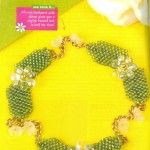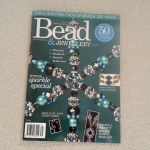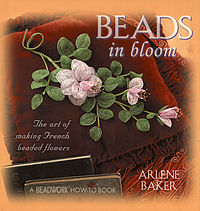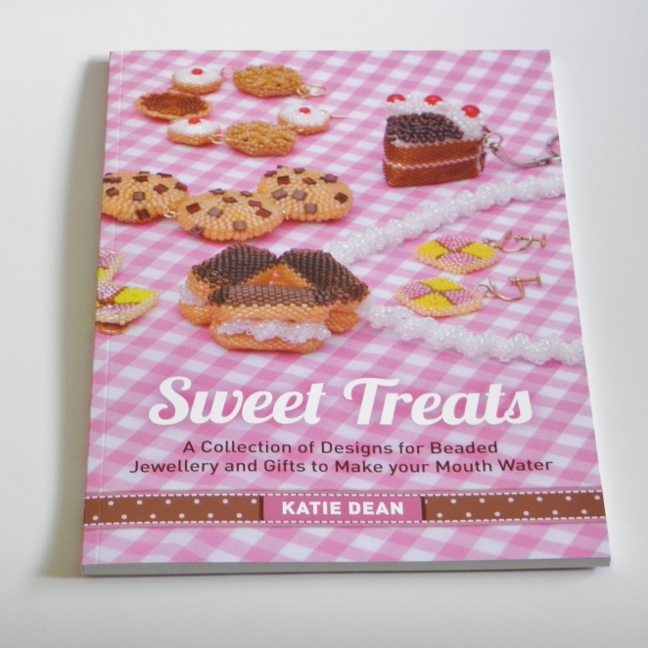Working with Magazines
Before I started working with magazines I did a bit of research about how to approach editors with my beading designs. The one piece of advice that I read over and over, not just in the beading world, but in publishing in general is: editors are very busy people so don’t keep bugging them with enquiries and questions. This is useful advice, but it does raise a few questions about how best to work with editors. If you’re not allowed to keep asking for advice or asking for a response, then how do you know if your work is going to be published or if your submission was even received? If you are working with a magazine and you have a question, is it a legitimate question or are you just going to annoy the editor?
Working with Magazines: Submitting your Work
The reality is every editor and every magazine works a little differently, so I can only  write from my own experience. As a contributor to a magazine, I have always taken care to follow the submission procedure outlined on the magazine’s website. For the larger magazines, submissions are usually acknowledged with an automatically generated email, so I know my idea got through and it is just a matter of waiting patiently until I hear back. In some cases, editorial meetings take place at specific times during a month, so depending on when your submission arrives, you may have to wait a few weeks before it is set before the editorial team and you hear anything. Just be patient – the decision will be passed on to you as soon as it has been made. There has been the odd occasion when a period of a couple of months has passed without me hearing anything, in which case I have written a polite email to check if I’m missing something. If this receives no response, I would assume that my work is not wanted and move on.
write from my own experience. As a contributor to a magazine, I have always taken care to follow the submission procedure outlined on the magazine’s website. For the larger magazines, submissions are usually acknowledged with an automatically generated email, so I know my idea got through and it is just a matter of waiting patiently until I hear back. In some cases, editorial meetings take place at specific times during a month, so depending on when your submission arrives, you may have to wait a few weeks before it is set before the editorial team and you hear anything. Just be patient – the decision will be passed on to you as soon as it has been made. There has been the odd occasion when a period of a couple of months has passed without me hearing anything, in which case I have written a polite email to check if I’m missing something. If this receives no response, I would assume that my work is not wanted and move on.
When you are making a submission, make sure you follow the guidelines of the magazine carefully and send in what they ask for: check whether they want jpg images or PDF submissions. Do they want full project instructions or just a photo and brief description? If nothing is specified then a photo and brief description is probably best. Make sure that whatever you submit is clearly labelled with your name and contact details. If the editor doesn’t know who you are or how to contact you, you can be pretty sure they won’t be accepting your submission, however lovely it is.
It may be tempting to send a speculative email offering a link to your website to see if an editor likes your style of w ork, but in my experience, editors do not have time to trawl through websites. They will be wanting original work, not something that has been published elsewhere, so anything that appears on your website will not be useable. You are much better off sending in a photo of a specific project (or perhaps a few projects) and asking if the magazine would like to use it/them. If your ideas are rejected, you might try asking for a reason why, but do not be surprised if this gets no response. Very often there is no other reason than that particular project did not quite fit with the plans on which the editor is working – it is not a reflection of your work and it does not mean you will never be published, just try again or try elsewhere.
ork, but in my experience, editors do not have time to trawl through websites. They will be wanting original work, not something that has been published elsewhere, so anything that appears on your website will not be useable. You are much better off sending in a photo of a specific project (or perhaps a few projects) and asking if the magazine would like to use it/them. If your ideas are rejected, you might try asking for a reason why, but do not be surprised if this gets no response. Very often there is no other reason than that particular project did not quite fit with the plans on which the editor is working – it is not a reflection of your work and it does not mean you will never be published, just try again or try elsewhere.
Working with magazines: the publishing process
Once you have a contract to work with a magazine, you will be put in contact with the editor who will be working on your project. If you have been sent a formal submission document to complete, this will come with instr uctions, but it is just possible you might have a question or two. If this is the case, try to ask only sensible questions and to put them as succinctly as possible and be patient as you wait for a response. After you have submitted your project instructions and diagrams and sent in the piece for photographing, you may hear nothing for a very long time. Do not be tempted to panic and start hassling the editor during this period. You can rest assured that the magazine will be working behind the scenes in production and you will be contacted if the editor has any questions or needs any more information from you.
uctions, but it is just possible you might have a question or two. If this is the case, try to ask only sensible questions and to put them as succinctly as possible and be patient as you wait for a response. After you have submitted your project instructions and diagrams and sent in the piece for photographing, you may hear nothing for a very long time. Do not be tempted to panic and start hassling the editor during this period. You can rest assured that the magazine will be working behind the scenes in production and you will be contacted if the editor has any questions or needs any more information from you.
Some magazines will send out proofs in PDF form before going to print. If this is the case, make sure you proof the work very carefully and return it within the requested timeframe. Do not assume that magazine editors are infallible: everyone makes mistakes and the reason you are being asked to proof is so that you acknowledge that you are happy that what will be printed is a correct representation of your work. If you fail to check things properly and then mistakes appear in the printed magazine, you must bear some of the responsibility for that. If this is your first time working with magazines, then it can be tempting to look at the proof and think it looks very pretty (it will because it has been professionally designed), then pat yourself on the back and write back to the editor to say ‘thank you that looks lovely’. You are not being asked to admire the prettiness of the layout, but to cast a careful eye over everything to make sure that the instructions are correct, the diagrams are all there and all as you expect and that in general everything is going to be easy for a reader to follow. Having said this, you must also understand that each magazine will have its own in-house style, so asking an editor to change the size or style of font, or something similar, because you don’t like it, is simply not going to happen!
If you fail to check things properly and then mistakes appear in the printed magazine, you must bear some of the responsibility for that. If this is your first time working with magazines, then it can be tempting to look at the proof and think it looks very pretty (it will because it has been professionally designed), then pat yourself on the back and write back to the editor to say ‘thank you that looks lovely’. You are not being asked to admire the prettiness of the layout, but to cast a careful eye over everything to make sure that the instructions are correct, the diagrams are all there and all as you expect and that in general everything is going to be easy for a reader to follow. Having said this, you must also understand that each magazine will have its own in-house style, so asking an editor to change the size or style of font, or something similar, because you don’t like it, is simply not going to happen!
Working with Magazines: an editor’s perspective
As I publish this post, I am working as editor of Bead and Jewellery Magazine, so I thought I would add a few words about what life is like as an editor.
On any given day I am probably working on at least three issues of the magazine simultaneously. I will b e liaising with the photographer and designer about the issue that will next be going to print: there will be questions to answer and articles to proof. I will also be working on submissions from designers for the next issue: each project is submitted on our submission form, but I have to edit that into a format that the layout designer can use, so that is why you may be asked to submit instructions weeks or months before the magazine will go to print. I will also be working on two, three or even four future issues as I put plans into place. Designers need to be commissioned far enough ahead to give them time to write their instructions and get their submission together before the deadline. In addition to all this, there will be administrative tasks to deal with and perhaps emails from readers.
e liaising with the photographer and designer about the issue that will next be going to print: there will be questions to answer and articles to proof. I will also be working on submissions from designers for the next issue: each project is submitted on our submission form, but I have to edit that into a format that the layout designer can use, so that is why you may be asked to submit instructions weeks or months before the magazine will go to print. I will also be working on two, three or even four future issues as I put plans into place. Designers need to be commissioned far enough ahead to give them time to write their instructions and get their submission together before the deadline. In addition to all this, there will be administrative tasks to deal with and perhaps emails from readers.
I really enjoy having the opportunity to work with so many different designers and I would really love to have long conversations with all of them. I want to be able to nurture new designers and help them through what can be a scary process at first, but the reality is, there are only 24 hours in each day and the workload can be pretty tough at times. I try very hard not to just ignore emails as I think this is simply rude, but equally, I’m sure you can understand why I’m going to prefer working with people who are organised and professional. If they are able to submit their designs on time and in the best possible state, then it makes my life very much easier. Any editor will tell you the same. We are not dragons and we do want to help and nurture as well, but if you are working with a magazine or trying to get a design accepted, then please also think and remember that you are probably just one of a large number of people who are also working with the editor!











Thank you for this post, it was very instructive. As it happens I was just trying to decide to which beading magazine I should send one of my projects and, while doing some research, stumbled upon this blog. Quite a coincidence, I would say.
I was thinking of Beadwork and Bead&Button, but as I live i Europe, I thought I should search for an European magazine, also because one of my little dreams is teaching workshops around Europe, one day.
I’ve started beading only a few years ago, in 2012, and learnt mostly from Youtube and single author beading magazines. My first subscription was at B&B, but as I said above, I wanted something more near by; searched and found Perlen Poesie and, of course, Bead magazine.
So I guess I’m going to prepare everything and send you an email in a few days. 🙂
Kind regards,
Szidonia Petki
Hi Szidonia,
I’m really glad you found this post helpful. I’m so pleased you’re looking into submitting your work to magazines. I will certainly look forward to receiving an email from you, so we’ll discuss that when you’re ready. I’ve also worked with Perlen Poesie myself and I can certainly recommend them too. You’re quite right: if you want to teach across Europe, then it is really good to get some work published in the European magazines so that people start to get to know your work and get a sense of your style. It’s a real thrill to see your work in print, so good luck with all the plans and I hope I will be able to help you along the way 🙂
Thanks for stopping by!
Katie x
Hello Katie, how are you?
I just realized that it was you that answered my beading project submission email, isn’t it! My project is the vintage Gold & Olive little bracelet.
I just wanted to say Hi and Thank you! And you will hear, or better read, from me soon. 🙂
Szidonia
Thanks Szidonia – it was lovely to hear from you 🙂